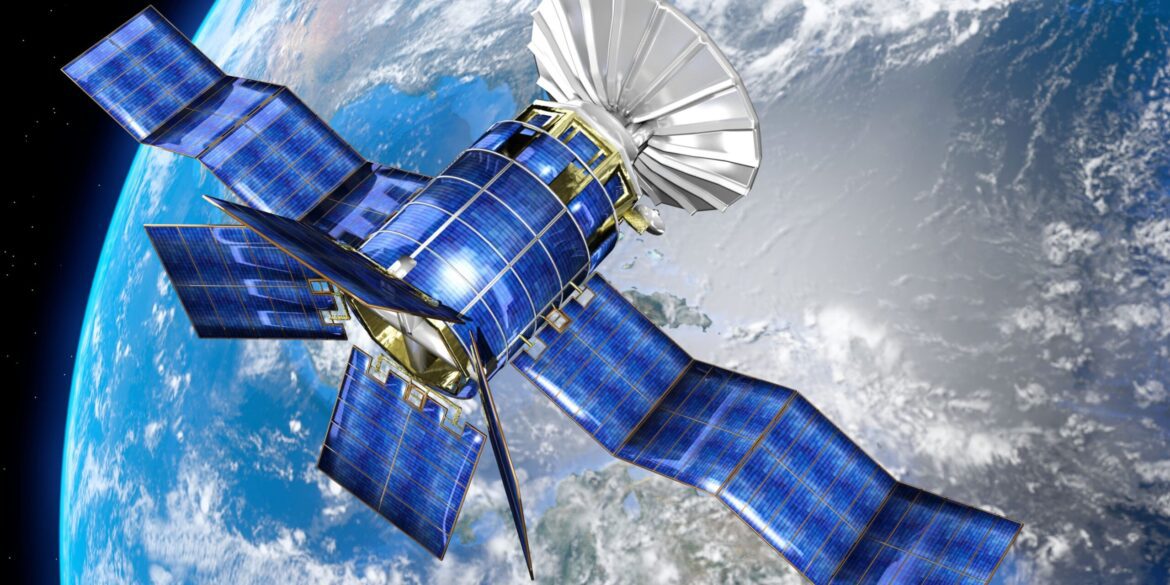A new 25-year analysis using satellite data has mapped particulate matter (PM 1) levels across the United States, offering new insights into the factors that have shaped air quality. By utilizing advanced satellite technology, researchers have been able to assess pollution trends at a national scale, providing a clearer understanding of how wildfires, vehicle emissions, and industrial byproducts impact the environment. This comprehensive analysis allows scientists to evaluate air quality changes over the last quarter-century, potentially influencing public health policies and environmental regulations in the future.
Impact of Wildfires on Air Quality
One of the most striking revelations from the satellite data is the significant increase in particulate pollution linked to wildfires, particularly in the western United States. As climate change exacerbates the frequency and intensity of wildfires, the study highlights a direct correlation between wildfire events and surges in PM 1 levels. Wildfires release large amounts of smoke and particulate matter into the atmosphere, significantly reducing air quality in affected regions. The data reveals that areas impacted by recurring fires are experiencing chronic pollution levels that exceed safe thresholds, potentially putting residents at greater risk for respiratory diseases and other health complications.
Regions such as California, Oregon, and Washington, known for their wildfire-prone landscapes, have seen a steady increase in particulate pollution over the years. The satellite data has made it easier for scientists to track these trends and pinpoint how wildfire seasonality is shifting with the warming climate. The analysis also emphasizes the growing urgency for wildfire mitigation and better land management strategies to reduce the environmental and health impacts of these events.
Vehicle Emissions Contributing to Urban Pollution
Another key factor contributing to particulate pollution in the U.S. is vehicle emissions. The satellite analysis reveals that urban areas with high traffic volumes, such as New York, Los Angeles, and Chicago, continue to show elevated PM 1 levels due to emissions from cars, trucks, and buses. Despite improvements in vehicle emissions standards and cleaner technology, traffic pollution remains a persistent source of particulate matter. This is especially concerning in densely populated urban centers, where air quality is already strained due to industrial activity and other environmental stressors.
The satellite data provides a comprehensive look at how vehicle emissions affect air quality over time. By monitoring pollution levels on a large scale, researchers can assess the effectiveness of past policies aimed at reducing vehicular pollution and determine areas where further action is needed. Strategies such as promoting electric vehicles, improving public transportation infrastructure, and implementing stricter emission standards are key to reducing pollution in cities across the U.S.
Industrial Byproducts and Their Role in Particulate Pollution
In addition to wildfires and vehicle emissions, industrial byproducts are a significant contributor to particulate pollution. Areas with high concentrations of manufacturing and energy production facilities, such as parts of the Midwest and Gulf Coast, show persistent levels of pollution from factory emissions and industrial waste. Satellite data reveals that regions near power plants, refineries, and manufacturing hubs experience consistent spikes in particulate pollution, which can pose long-term health risks for residents living in these areas.
The data allows researchers to monitor industrial hotspots and identify patterns in pollution levels, helping to shape policies aimed at reducing emissions from these sources. Tightening regulations around industrial processes, investing in cleaner technologies, and incentivizing companies to adopt sustainable practices are vital steps in addressing the ongoing pollution challenges posed by industrial byproducts.
The Future of Air Quality Monitoring
This innovative use of satellite technology provides a much-needed tool for air quality monitoring on a national scale. The detailed, long-term data sets allow policymakers and environmental agencies to gain a clearer understanding of how pollution sources are evolving over time. In particular, the ability to track particulate matter levels in real time and over long periods gives scientists a powerful tool for predicting air quality trends and guiding intervention strategies.
As satellite technology continues to improve, future studies may offer even more precise data on specific pollution sources, geographic patterns, and health impacts. This would allow for even more targeted efforts to combat air pollution, potentially reducing the number of people exposed to harmful particulate matter and improving the overall health and well-being of U.S. residents.
Additionally, the insights gleaned from this study can help shape national air quality standards and inform the development of policies that balance economic growth with environmental protection. The data could be used to promote cleaner industrial practices, enhance wildfire management techniques, and implement more sustainable urban planning and transportation systems. Ultimately, these efforts will contribute to cleaner air, better public health, and a more sustainable future for all.
By using satellite data to better understand pollution trends and the factors that drive them, this analysis represents a significant step forward in addressing the ongoing challenges of air quality in the U.S.

